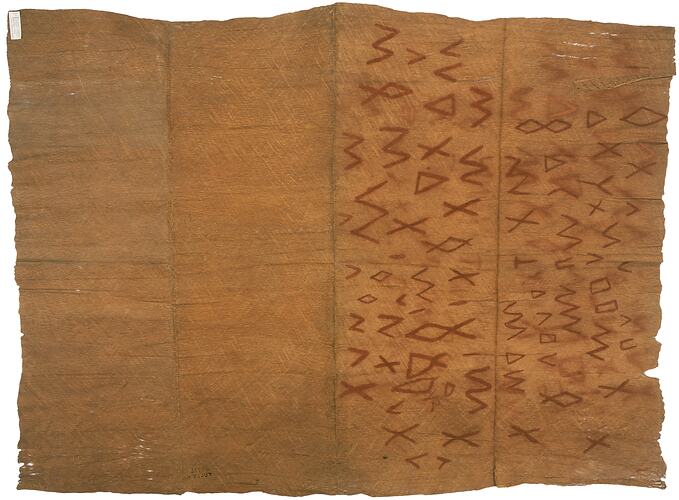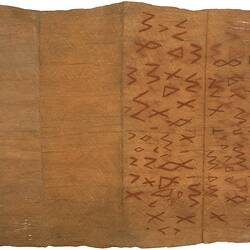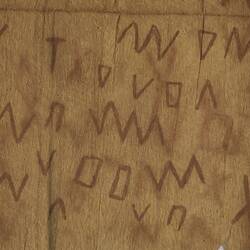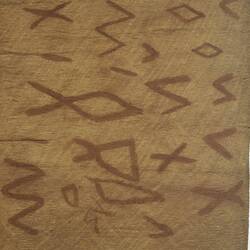Summary
Bark blankets were made in the rainforest region of northeast Queensland from the inner bark of a native fig tree. The bark was cut with a stone axe and stripped from the inner part of the tree, and once peeled off, the thin sheets were made pliable by pounding them with a wooden mallet over a smooth tree-root anvil. The finished blankets were able to be folded into small parcels and carried inside baskets when traveling between camps. A thriving trade in artefacts occurred in Atherton, Babinda, Cardwell, Herbert River, Kuranda, Russell River and the Tully River in the late 1800s. These were depots for the distribution of rations and blankets to Aboriginal people that became well-known to private collectors and photographers. Walter Roth recorded the making of bark blankets from the inner bark of a fig tree at Atherton around 1900. From the 1870s onwards, the remote valleys behind Tully, Cairns and Mossman were a prime focus of mining and other ventures, and soon afterward was a mecca for botanists, ornithologists, ethnographers and photographers who traded for artefacts and took photographs of Aboriginal people. Many of these were later given or sold to museums.
Physical Description
A single sheet of beaten bark decorated on one half with linear designs.
Significance
This is an extremely rare painted bark blanket, the designs having been made with natural pigments. The fine lines suggest the red coloured ochre was probably applied using a fine stick.
More Information
-
Object/Medium
Bark cloth
-
Maker
-
Locality
-
Date Produced
-
Collector
-
Date Collected
-
References
[Book] Museum Victoria. 2004. Treasures of the Museum. Victoria, Australia. 206.
-
Type of item
-
Discipline
-
Category
-
Collecting Areas
Australian Indigenous - Northern Australia and Queensland and Torres Strait Islands




